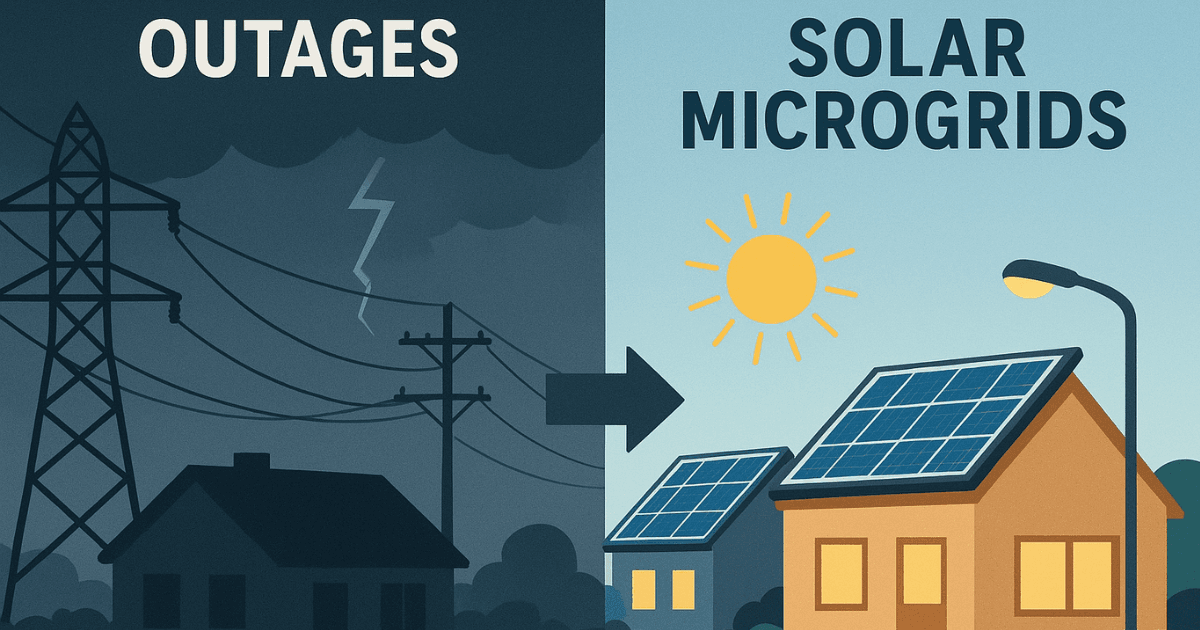
Best Solar Panel Company in Dehradun Powering Microgrid India
India’s Power Crisis and the Rise of Solar Microgrids
India’s growing population and industrial expansion have put immense pressure on its power supply, often leading to frequent outages. As I see it, this energy gap demands an innovative, sustainable solution. Solar microgrids are mini power systems that provide clean, reliable electricity to their respective communities. Unlike conventional grid systems, decentralizing them reduces one’s reliance on fossil fuel and centralized infrastructure. Microgrid decentralizes the electricity supply, which does not omit the very far corner. At Poornta X Renewable, the best solar panel company in Dehradun, I’m proud to be part of this revolution, lighting up lives with smart solar solutions.
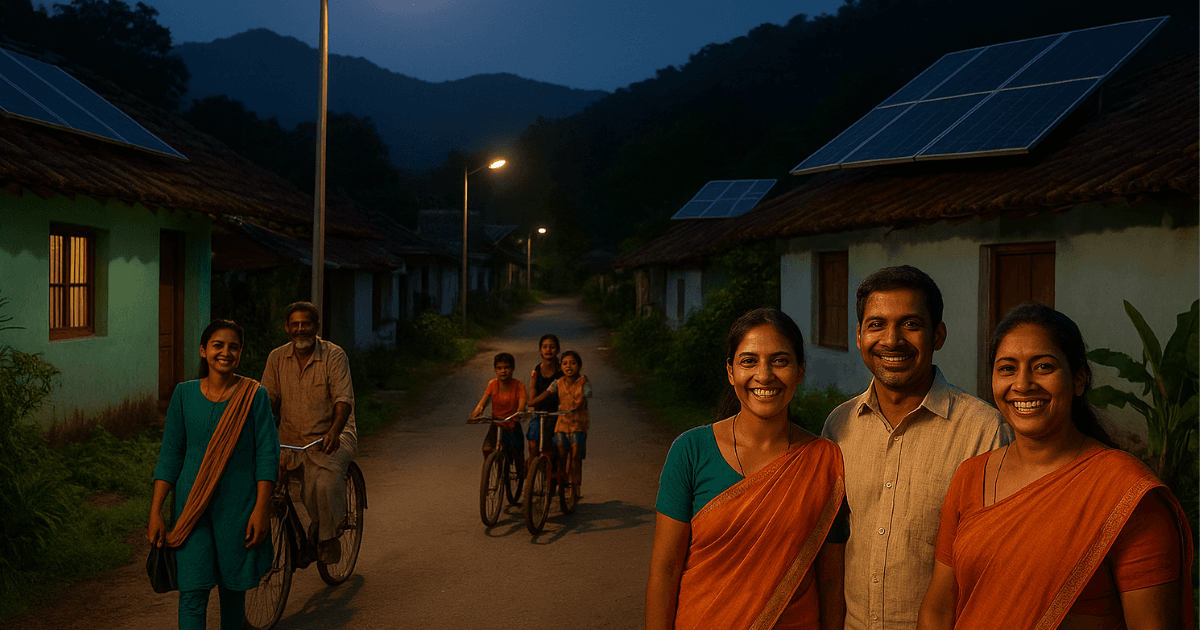 To understand how these systems truly work, let’s explore what solar microgrids are and how they function.
To understand how these systems truly work, let’s explore what solar microgrids are and how they function.
What Are Solar Microgrids and How Do They Work?
A solar microgrid is a small, self-sufficient energy network that generates and distributes electricity locally. I combine solar panels, batteries, and smart inverters to create a continuous power flow—even when the main grid fails. These systems store excess sunlight during the day and release it at night, ensuring uninterrupted electricity. Solar microgrids, unlike traditional grids, have the ability to work independently of or alongside the main grid. This flexibility makes them ideal for remote or power-deficient areas. I see that the sun is the future of sustainable energy in India because it converts solar energy into usable energy.
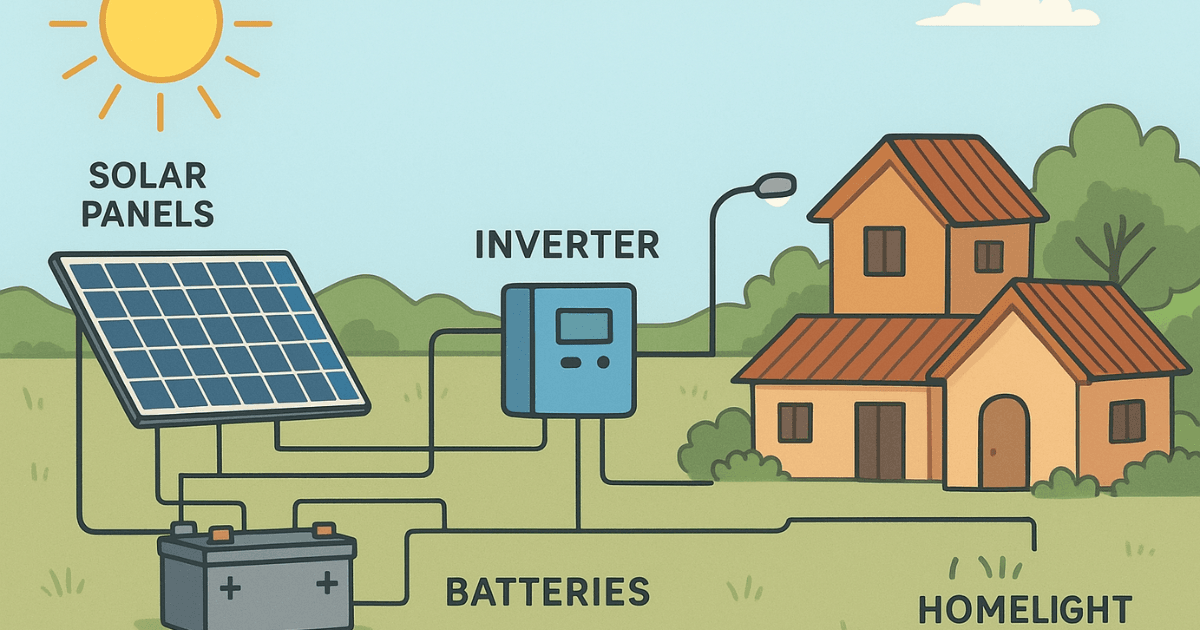 Now that we understand how solar microgrids function, it’s time to see why India urgently needs them to tackle its growing power challenges.
Now that we understand how solar microgrids function, it’s time to see why India urgently needs them to tackle its growing power challenges.
Why India Needs Solar Microgrids Now More Than Ever
India’s energy demand is soaring with rapid urbanization, growing industries, and expanding rural electrification. Yet, frequent power cuts still disrupt daily life and productivity. I see solar microgrids as the bridge between demand and sustainable supply. They reduce dependency on overloaded central grids while promoting clean, renewable power generation. With fossil fuels depleting and electricity costs rising, India needs a reliable alternative that empowers both cities and villages. Solar microgrids meet that need—offering energy independence, reduced emissions, and long-term savings. Their role is no longer optional; it’s essential for India’s energy future.
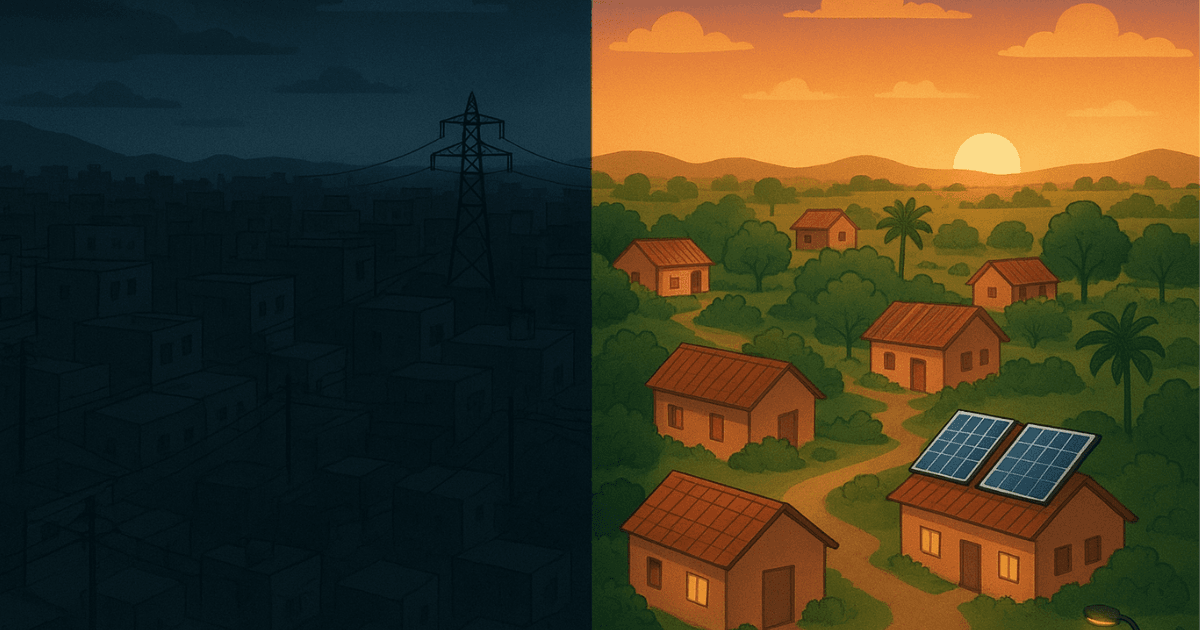 Let’s now explore the specific advantages these solar microgrids bring to Indian communities across different sectors.
Let’s now explore the specific advantages these solar microgrids bring to Indian communities across different sectors.
Advantages of Solar Microgrids for Indian Communities
Solar microgrids empower communities with continuous, affordable, and eco-friendly energy. I’ve seen how they reduce electricity bills while providing independence from unstable national grids. Their low maintenance and long lifespan make them ideal for rural development. They also create local jobs—from installation to maintenance—strengthening community economies. Apart from earning profits, they also ensure the smooth functioning of schools, hospitals, and small enterprises without the interruption of electrical supply. It is harnessing the endless power of the sun that these systems foster sustainability and development. In short, solar microgrids light the path to a greener, self-reliant India.

To truly understand their impact, let’s compare solar microgrids with traditional power grids and see why this shift matters.
Solar Microgrids vs Traditional Power Grids
Traditional power grids rely on centralized generation and long-distance transmission, often leading to high energy loss and frequent outages. In contrast, solar microgrids produce electricity locally, ensuring efficiency and reliability. I find their decentralized model not only cuts costs but also strengthens energy security. Conventional grids suffer during natural calamities or peak loads, whereas microgrids remain operational independently in such critical times. Thus, they confer resilience. Besides, they run on renewable energy and not on fossil fuels, thus reducing India’s carbon footprint. That makes this solar microgrid the more intelligent, cleaner, and future-ready energy solution.
 Now that we’ve compared both systems, let’s explore how solar microgrids are transforming rural India through reliable electrification.
Now that we’ve compared both systems, let’s explore how solar microgrids are transforming rural India through reliable electrification.
How Solar Microgrids Can Strengthen Rural Electrification in India
In many rural areas, access to reliable electricity remains a daily struggle. I’ve witnessed how solar microgrids change that narrative by bringing consistent, clean energy where traditional grids can’t reach. They power schools, healthcare centers, and farms, improving quality of life and productivity. Villagers no longer rely on kerosene lamps or diesel generators, reducing both costs and pollution. These systems also encourage entrepreneurship by powering small businesses and local industries. Through decentralization, solar microgrids empower rural India to become energy self-sufficient and sustainable for generations to come.
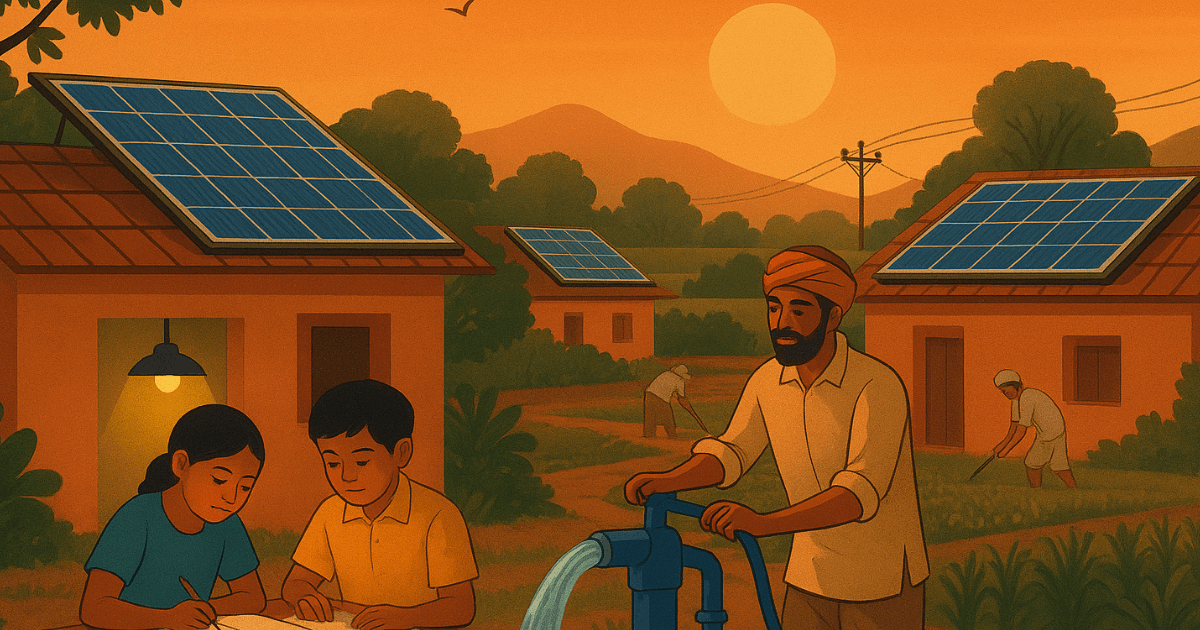 To make this transformation possible, companies like Poornta X Renewable play a crucial role in designing and deploying efficient solar microgrid solutions.
To make this transformation possible, companies like Poornta X Renewable play a crucial role in designing and deploying efficient solar microgrid solutions.
Role of Best Solar Panel Companies in Dehradun Like Poornta X Renewable
As part of Poornta X Renewable, I take pride in helping communities embrace clean energy through customized solar microgrid solutions. The expert teams that we have technically operate in assumptions toward practical local demand in house installations or school systems or industries. Our concern is on solar panels, batteries, and anything that caters to performance monitoring to last long. By combining innovation with affordability, we make solar energy accessible to everyone. Our mission is simple—to light up every corner of Uttarakhand sustainably. That’s what makes us the best solar panel company in Dehradun committed to driving India’s renewable energy revolution.
To strengthen this movement even further, it’s important to understand how supportive government policies and incentives are encouraging the adoption of solar microgrids.
Government Policies and Incentives Supporting Solar Microgrids
India’s government has launched several initiatives to promote solar energy adoption and microgrid development. I’ve seen how programs like the PM-KUSUM Scheme and the National Solar Mission empower farmers and rural communities to generate their own electricity. It is also possible to state that other state governments, specifically Uttarakhand, provide good subsidies and tax benefits for solar installations. Such measures indeed encourage renewable energy to become more available and would help an industry in investing itself in clean technology. With supportive policies in place, solar microgrids are gaining momentum across India, driving sustainable progress and reducing dependency on fossil fuels.
 Despite these positive steps, certain challenges still limit the large-scale adoption of solar microgrids across the country—let’s understand them next.
Despite these positive steps, certain challenges still limit the large-scale adoption of solar microgrids across the country—let’s understand them next.
Challenges in Implementing Solar Microgrids in India
While solar microgrids offer immense potential, implementing them in India comes with challenges. The initial setup costs can be a hindrance for rural communities, I have seen. The intervention of an expert becomes necessary for entry into refurbishing batteries concerning the technology, climate, and mechanics of its maintenance. Furthermore, lack of awareness and expertise would slow down initial adoption. However, with the right planning, training, and support from experienced companies like Poornta X Renewable, these obstacles can be effectively overcome. By addressing these challenges, we can ensure that solar microgrids reach their full potential, delivering reliable, sustainable energy across India.
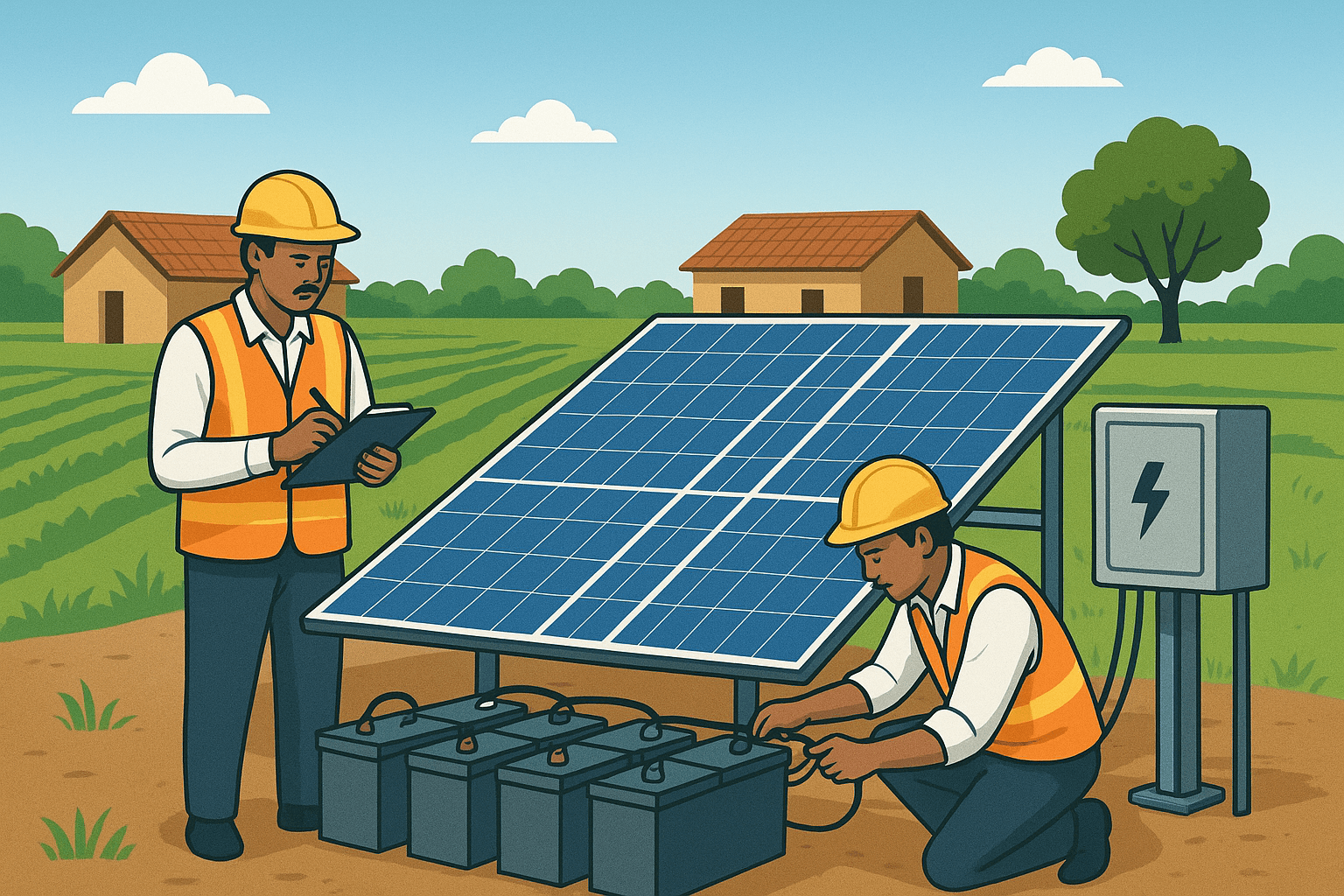
Understanding these challenges sets the stage to explore the promising future of solar microgrids and how they can drive India toward energy independence.
The Future of Solar Microgrids in India: A Step Towards Energy Independence
I strongly believe solar microgrids are central to India’s journey toward energy independence. Ever-developing microgrids speeches are enhanced by boosts in technology and support policies at present–all very welcome effects; yet no such way exists to establish the fact, one way or another. They promise reliable electricity, reduce carbon emissions, and empower communities economically. As more businesses and villages adopt these systems, India moves closer to a decentralized, sustainable energy future. By integrating solar microgrids into urban and rural planning, we can achieve a cleaner, greener, and self-reliant nation, making renewable energy a cornerstone of India’s power infrastructure.
To fully realize this vision, choosing the right partner for solar microgrid solutions is crucial—let’s see why Poornta X Renewable stands out.
Why Choose Poornta X Renewable for Solar Microgrid Installation?
At Poornta X Renewable, I ensure every solar microgrid project is tailored to meet specific energy needs. Our expertise spans residential, commercial, and industrial setups, using high-quality panels and smart storage solutions. I prioritize durability, efficiency, and sustainability, making renewable energy both reliable and affordable. By combining technical excellence with local knowledge, we help communities and businesses transition smoothly to clean energy. Choosing us means partnering with the best solar panel company in Dehradun, committed to lighting up lives while supporting India’s renewable energy goals.
For those seeking clarity, I’ve also compiled answers to the most common questions about
FAQs About Solar Microgrids in India
Many people ask me about solar microgrids and their practical benefits. Questions like “What is a solar microgrid and how does it work?” or “How much does it cost to install one in India?” are common. I also address queries about subsidies, maintenance, and selecting the best solar panel company in Dehradun. By providing clear answers, I help communities make informed decisions. Understanding these FAQs empowers individuals and businesses to adopt solar microgrids confidently, ensuring efficient energy use, sustainability, and long-term savings for both urban and rural areas.
Having addressed common questions, it’s important to conclude by summarizing how solar microgrids can empower India’s energy future.
Conclusion: Empowering India’s Energy Future with Solar Microgrids
I firmly believe solar microgrids are transforming India’s energy landscape by providing clean, reliable, and decentralized power. They empower communities, support businesses, and reduce environmental impact.
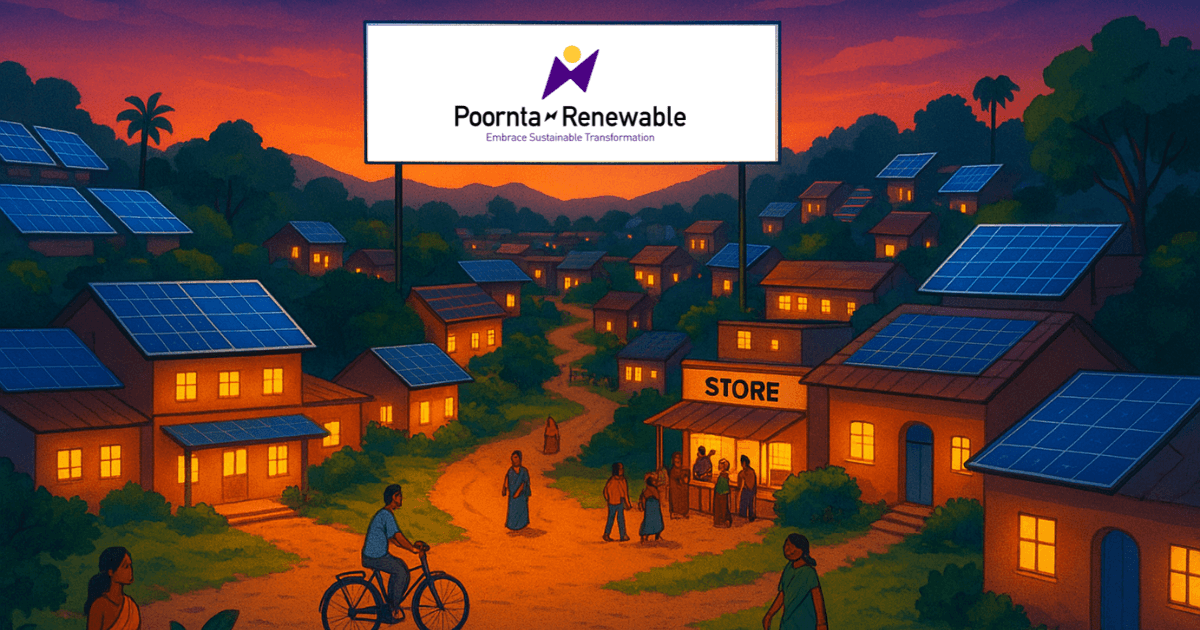 At Poornta X Renewable, I am proud to contribute to this renewable revolution, offering tailored solar solutions across Dehradun and beyond. By choosing sustainable energy, we collectively move toward a greener, self-reliant India. Solar microgrids are more than technology—they are a pathway to progress, energy independence, and a brighter future for every household and business in the country.
At Poornta X Renewable, I am proud to contribute to this renewable revolution, offering tailored solar solutions across Dehradun and beyond. By choosing sustainable energy, we collectively move toward a greener, self-reliant India. Solar microgrids are more than technology—they are a pathway to progress, energy independence, and a brighter future for every household and business in the country.










2 Comments
Priyanshu karnwal
October 27, 2025Nice 🙂
Pankaj Bisht
October 27, 2025Sustainable future start here! Great work team Poornta X Renewable